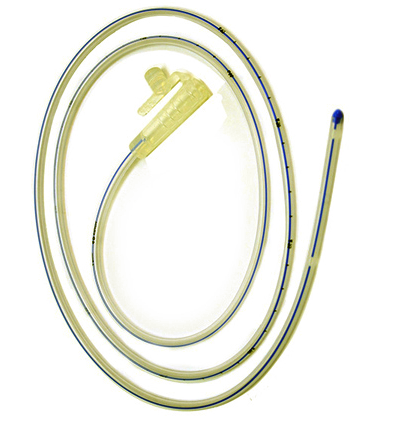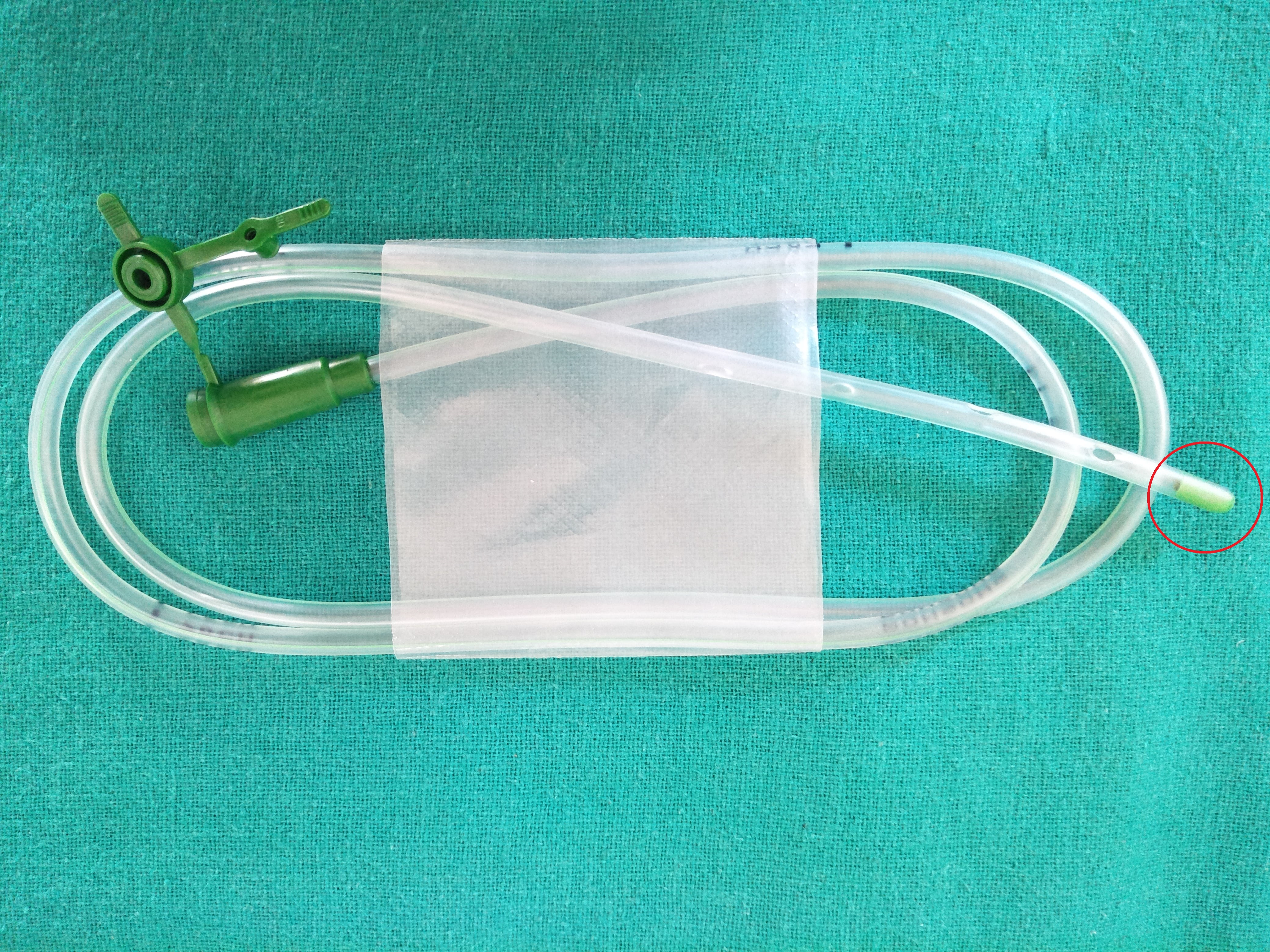[1]
Ten Broek RPG, Krielen P, Di Saverio S, Coccolini F, Biffl WL, Ansaloni L, Velmahos GC, Sartelli M, Fraga GP, Kelly MD, Moore FA, Peitzman AB, Leppaniemi A, Moore EE, Jeekel J, Kluger Y, Sugrue M, Balogh ZJ, Bendinelli C, Civil I, Coimbra R, De Moya M, Ferrada P, Inaba K, Ivatury R, Latifi R, Kashuk JL, Kirkpatrick AW, Maier R, Rizoli S, Sakakushev B, Scalea T, Søreide K, Weber D, Wani I, Abu-Zidan FM, De'Angelis N, Piscioneri F, Galante JM, Catena F, van Goor H. Bologna guidelines for diagnosis and management of adhesive small bowel obstruction (ASBO): 2017 update of the evidence-based guidelines from the world society of emergency surgery ASBO working group. World journal of emergency surgery : WJES. 2018:13():24. doi: 10.1186/s13017-018-0185-2. Epub 2018 Jun 19
[PubMed PMID: 29946347]
Level 1 (high-level) evidence
[2]
Blumenstein I,Shastri YM,Stein J, Gastroenteric tube feeding: techniques, problems and solutions. World journal of gastroenterology. 2014 Jul 14;
[PubMed PMID: 25024606]
[3]
Phillips DE,Sherman IW,Asgarali S,Williams RS, How far to pass a nasogastric tube? Particular reference to the distance from the anterior nares to the upper oesophagus. Journal of the Royal College of Surgeons of Edinburgh. 1994 Oct;
[PubMed PMID: 7861338]
[4]
Hanson RL. Predictive criteria for length of nasogastric tube insertion for tube feeding. JPEN. Journal of parenteral and enteral nutrition. 1979 May-Jun:3(3):160-3
[PubMed PMID: 113579]
[5]
Fan PEM,Tan SB,Farah GI,Cheok PG,Chock WT,Sutha W,Xu D,Chua W,Kwan XL,Li CL,Teo WQ,Ang SY, Adequacy of different measurement methods in determining nasogastric tube insertion lengths: An observational study. International journal of nursing studies. 2019 Apr;
[PubMed PMID: 30743198]
Level 2 (mid-level) evidence
[6]
Nelson R, Edwards S, Tse B. Prophylactic nasogastric decompression after abdominal surgery. The Cochrane database of systematic reviews. 2007 Jul 18:2007(3):CD004929
[PubMed PMID: 17636780]
Level 1 (high-level) evidence
[7]
Kamboj AK, Hoversten P, Leggett CL. Upper Gastrointestinal Bleeding: Etiologies and Management. Mayo Clinic proceedings. 2019 Apr:94(4):697-703. doi: 10.1016/j.mayocp.2019.01.022. Epub
[PubMed PMID: 30947833]
[8]
Kessel B,Olsha O,Younis A,Daskal Y,Granovsky E,Alfici R, Evaluation of nasogastric tubes to enable differentiation between upper and lower gastrointestinal bleeding in unselected patients with melena. European journal of emergency medicine : official journal of the European Society for Emergency Medicine. 2016 Feb;
[PubMed PMID: 25747792]
[9]
Huang ES, Karsan S, Kanwal F, Singh I, Makhani M, Spiegel BM. Impact of nasogastric lavage on outcomes in acute GI bleeding. Gastrointestinal endoscopy. 2011 Nov:74(5):971-80. doi: 10.1016/j.gie.2011.04.045. Epub 2011 Jul 7
[PubMed PMID: 21737077]
[10]
Hanna AS, Grindle CR, Patel AA, Rosen MR, Evans JJ. Inadvertent insertion of nasogastric tube into the brain stem and spinal cord after endoscopic skull base surgery. American journal of otolaryngology. 2012 Jan-Feb:33(1):178-80. doi: 10.1016/j.amjoto.2011.04.001. Epub 2011 Jun 28
[PubMed PMID: 21715048]
[11]
Kelly G,Lee P, Nasendoscopically-assisted placement of a nasogastric feeding tube. The Journal of laryngology and otology. 1999 Sep
[PubMed PMID: 10664689]
[13]
Uri O, Yosefov L, Haim A, Behrbalk E, Halpern P. Lidocaine gel as an anesthetic protocol for nasogastric tube insertion in the ED. The American journal of emergency medicine. 2011 May:29(4):386-90. doi: 10.1016/j.ajem.2009.10.011. Epub 2010 Mar 25
[PubMed PMID: 20825806]
[14]
Cullen L, Taylor D, Taylor S, Chu K. Nebulized lidocaine decreases the discomfort of nasogastric tube insertion: a randomized, double-blind trial. Annals of emergency medicine. 2004 Aug:44(2):131-7
[PubMed PMID: 15278085]
Level 1 (high-level) evidence
[15]
Mandal M,Karmakar A,Basu SR, Nasogastric tube insertion in anaesthetised, intubated adult patients: A comparison between three techniques. Indian journal of anaesthesia. 2018 Aug
[PubMed PMID: 30166656]
[16]
Burns SM,Martin M,Robbins V,Friday T,Coffindaffer M,Burns SC,Burns JE, Comparison of nasogastric tube securing methods and tube types in medical intensive care patients. American journal of critical care : an official publication, American Association of Critical-Care Nurses. 1995 May;
[PubMed PMID: 7787913]
[17]
Boeykens K,Steeman E,Duysburgh I, Reliability of pH measurement and the auscultatory method to confirm the position of a nasogastric tube. International journal of nursing studies. 2014 Nov;
[PubMed PMID: 24731474]
[18]
Metheny NA,Krieger MM,Healey F,Meert KL, A review of guidelines to distinguish between gastric and pulmonary placement of nasogastric tubes. Heart
[PubMed PMID: 30665700]
[20]
Genú PR,de Oliveira DM,Vasconcellos RJ,Nogueira RV,Vasconcelos BC, Inadvertent intracranial placement of a nasogastric tube in a patient with severe craniofacial trauma: a case report. Journal of oral and maxillofacial surgery : official journal of the American Association of Oral and Maxillofacial Surgeons. 2004 Nov
[PubMed PMID: 15510370]
Level 3 (low-level) evidence
[21]
Wang PC, Tseng GY, Yang HB, Chou KC, Chen CH. Inadvertent tracheobronchial placement of feeding tube in a mechanically ventilated patient. Journal of the Chinese Medical Association : JCMA. 2008 Jul:71(7):365-7. doi: 10.1016/S1726-4901(08)70141-2. Epub
[PubMed PMID: 18653401]
[22]
Gomes GF, Pisani JC, Macedo ED, Campos AC. The nasogastric feeding tube as a risk factor for aspiration and aspiration pneumonia. Current opinion in clinical nutrition and metabolic care. 2003 May:6(3):327-33
[PubMed PMID: 12690267]
Level 3 (low-level) evidence
[23]
Metheny NA,Meert KL,Clouse RE, Complications related to feeding tube placement. Current opinion in gastroenterology. 2007 Mar
[PubMed PMID: 17268247]
Level 3 (low-level) evidence
[24]
Bryant LR, Mobin-Uddin K, Dillon ML, Griffen WO Jr. Comparison of ice water with iced saline solution for gastric lavage in gastroduodenal hemorrhage. American journal of surgery. 1972 Nov:124(5):570-2
[PubMed PMID: 4538731]
[25]
Lai PB, Pang PC, Chan SK, Lau WY. Necrosis of the nasal ala after improper taping of a nasogastric tube. International journal of clinical practice. 2001 Mar:55(2):145
[PubMed PMID: 11321856]
[26]
Schroeder J,Sitzer V, Nursing Care Guidelines for Reducing Hospital-Acquired Nasogastric Tube-Related Pressure Injuries. Critical care nurse. 2019 Dec 1;
[PubMed PMID: 31961939]


